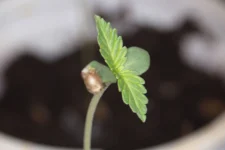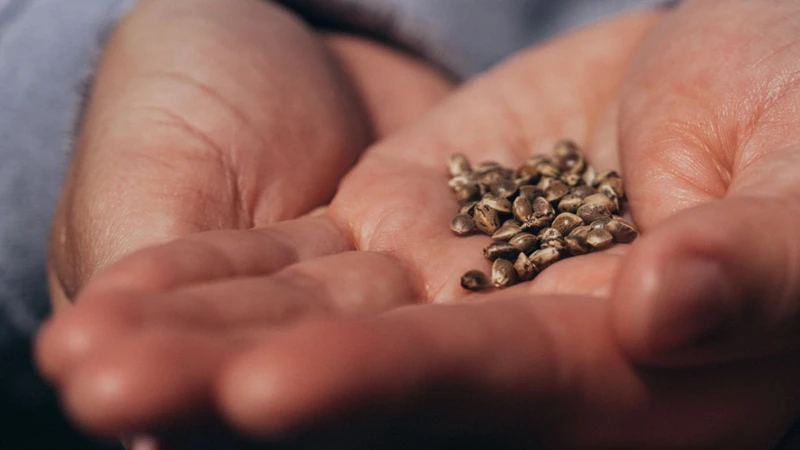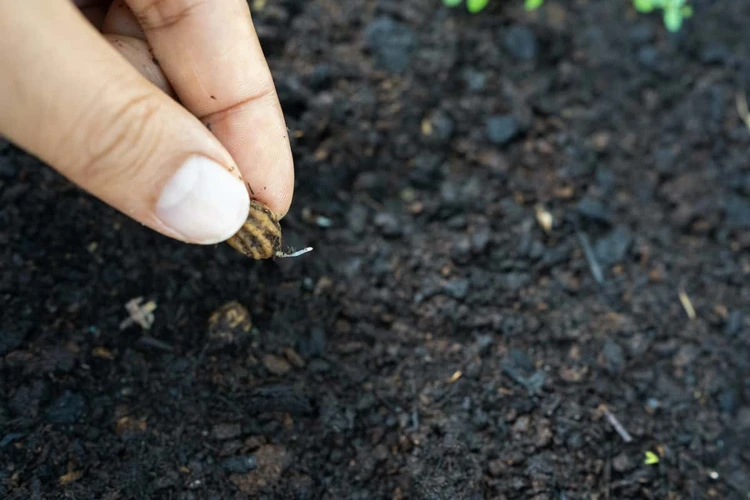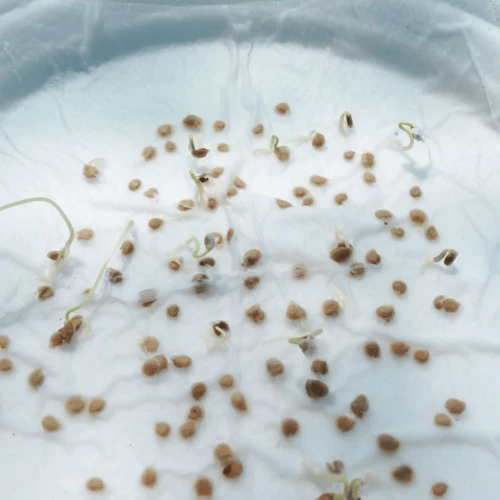
Cannabis Seed Scarification: A Guide to Enhancing Germination
Starting a cannabis garden can be a challenge, especially when it comes to germinating cannabis seeds. However, there is one technique that can help improve the germination success rates: cannabis seed scarification. If you’re not familiar with this term, you’re not alone. Cannabis seed scarification can seem confusing and intimidating for beginner growers who haven’t heard of it before. In this article, we will delve into what cannabis seed scarification is, why it matters, when and how to do it, and some troubleshooting tips to help you get the best results. So, grab a seat, and get ready to learn about this unique technique that can give your cannabis garden the boost it needs.
What is Cannabis Seed Scarification?
Contents
For those new to the world of growing cannabis, the term “seed scarification” may seem unfamiliar and daunting. However, despite its intimidating name, the process of seed scarification is actually quite simple and can greatly benefit the growth and yield of your cannabis plants. In essence, seed scarification involves creating a small abrasion in the protective outer layer of the seed in order to promote a more efficient and successful germination. Let us delve deeper into the different types of seed scarification and their respective benefits.
Types of Seed Scarification
Scarification is a process that involves damaging the seed coat to make it easier for water to penetrate and allow the seed to germinate. There are different types of scarification methods, each with varying degrees of effectiveness, and choosing the right one will depend on the seeds you’re working with.
Here are some types of seed scarification methods you can consider:
| Scarification Method | Description |
|---|---|
| Physical scarification | Also known as ‘mechanical scarification,’ this method involves nicking, scratching, or lightly sandpapering the seed coat to break down its hard exterior. This can be done using a knife, sandpaper, or emery board to gently rub the surface of the seed. |
| Chemical scarification | This method uses acid to dissolve the outer layer of the seed coat. Typically, household bleach or sulfuric acid can be used by soaking the seeds in the diluted solution, but this should be used with caution and only with a full understanding of the risks involved. |
| Heat scarification | Using hot water or flame to weaken the seed coat is one of the easiest methods to perform. Soak the seeds in hot water for up to 24 hours or hold them briefly in the heat of a lighter flame until they start to darken, but not long enough to damage or burn them. |
| Cold stratification | This method involves chilling the seeds in a moist environment, such as a fridge, for a period of time to simulate the natural conditions required for sprouting. This can be achieved by placing the seeds in a damp paper towel and placing them in the fridge for a week or longer depending on the species. |
Although scarification can improve germination rates and plant growth, it’s important to note that not all seeds require this process. Some seeds have a naturally soft seed coat, while others require specific environmental conditions, such as fire, to stimulate germination. It’s important to research the particular species of cannabis plant you’re working with to determine if scarification is necessary.
Why Scarification Matters
If you’re wondering why scarification is such an important step in preparing cannabis seeds for germination, it’s because this process can make a remarkable difference in the growth and yield of the plant. By breaking down the seed’s outer shell, you’re allowing the embryo to emerge and access the nutrients inside the seed coat. This can potentially give your cannabis plant a head start in development, leading to stronger roots, larger buds, and a greater overall yield. Let’s take a closer look at why scarification matters and what benefits it can bring to your cannabis grow.
Impact on Germination
Cannabis seed scarification involves various methods of breaking or weakening the seed coat, which can have a significant impact on germination. The seed coat is the outer protective layer of a seed; without scarification, it can be tough, thick and resistant to moisture absorption resulting in low germination rates.
But why does scarification matter for germination?
Scarification helps to expose the inner layer of the seed, known as the endosperm, to moisture and oxygen, allowing germination to begin. The endosperm is responsible for providing nutrients and energy to the developing embryo, and access to this layer is required for successful germination. Scarification also stimulates the embryo to produce plant hormones which cause the seed to germinate.
There are various methods of seed scarification, each with a different effect on the seed coat and germination rate. Here are some common types of seed scarification and their impact on germination:
| Seed Scarification Method | Impact on Germination |
|---|---|
| Physical Scarification (e.g. nicking, scratching or sanding the seed coat) |
Creates small openings in the seed coat which allows moisture and oxygen to penetrate, promoting quicker and more consistent germination. |
| Chemical Scarification (e.g. using acid or hydrogen peroxide to weaken the seed coat) |
The acid or hydrogen peroxide creates small punctures in the seed coat which allows moisture and oxygen to penetrate. The chemicals can also stimulate the release of enzymes which help break down the seed coat. |
| Hot Water Scarification (e.g. soaking seeds in hot water for a short period of time) |
The hot water causes the seed coat to expand and weaken, allowing easier access for moisture and oxygen, which helps promote germination. |
Scarification is an important step for any gardener looking to increase their germination rates and boost their harvest. By breaking down or weakening the seed coat, gardeners can help the developing embryo access the endosperm and nutrients required for successful germination.
Boost in Growth
Scarification of cannabis seeds not only increases the germination rate but also provides a significant boost in growth. Scarification helps break down the hard outer shell of the seed and makes it easier for the plant to absorb the necessary nutrients from the soil.
The benefits of scarification for growth include:
- Improved absorption of water and nutrients by the seeds
- Stimulated root growth
- Increased cell division and expansion
- Stronger stems that can support more weight and withstand wind and other environmental stressors
- Enhanced tolerance to drought and other adverse conditions
Scarification also helps to improve the overall health of the plant as it grows. By increasing nutrient uptake and root development, scarified seeds have a better opportunity to develop an extensive root structure that supports rapid plant growth.
In addition to these benefits, scarification can help increase the yield potential of the cannabis plant. With stronger root systems, the plant can take in more nutrients and water, which helps it produce larger buds and overall higher yields.
It is important to note, however, that while scarification can greatly enhance plant growth, it should be done correctly and with caution. The process can potentially damage the seeds if done too aggressively, which can lead to reduced germination rates and stunted growth.
Increased Yield Potential
One of the key benefits of cannabis seed scarification is its potential to increase the yield of your crop. By scarifying cannabis seeds, you can effectively boost the rate of germination, allowing you to cultivate a larger number of plants. This in turn increases the potential yield of your crop, giving you more buds to harvest and ultimately increasing your profits as a grower.
Research shows that scarification can lead to a significant increase in yield potential. In fact, one study found that scarified seeds yielded up to 40% more than non-scarified seeds. This is due in part to the fact that scarification enables the seed to absorb water more easily and efficiently, allowing the plant to establish a stronger root system and ultimately grow bigger and stronger.
But it’s not just about quantity; scarification can also enhance the quality of the buds you produce. When cannabis plants are able to grow more easily and with less stress, they can produce more resinous and flavorful buds. Scarification can lead to more consistent growth rates and bud sizes, which can be desirable for both personal and commercial growers.
Below is a table summarizing the benefits of increased yield potential with cannabis seed scarification:
| Benefits of Increased Yield Potential | Description |
| Bigger Harvests | With scarification, you can cultivate a larger number of plants, resulting in a larger yield at harvest time. |
| Better Quality Buds | Scarification can enhance the flavor, aroma, and potency of your buds, leading to a more enjoyable smoking experience for you or your customers. |
| Consistent Growth Rates | Scarification can help ensure that your plants grow at a consistent rate, leading to more uniform bud sizes and a more professional-looking crop. |
Keep in mind that while scarification can be a valuable tool for maximizing yield potential, it’s only one piece of the puzzle. To truly achieve a high yield, you’ll need to also focus on factors such as light, water, nutrients, and pest management. With the right combination of techniques and attention to detail, however, cannabis seed scarification can help you achieve the bountiful harvest you’ve been dreaming of.
When and How to Scarify Cannabis Seeds
If you’ve decided to incorporate cannabis seed scarification into your growing process, you may be wondering when and how to start. Scarifying your cannabis seeds is not a difficult process, but it requires precision and the right tools to ensure success. In this section, we’ll discuss the ideal time to scarify your seeds and the different techniques you can use to achieve the desired results. So, let’s get started with some practical advice and considerations to help you achieve the best possible outcome from your cannabis cultivation.
Tools and Techniques
Scarifying cannabis seeds is a delicate process, and the right tools and techniques are essential for success. There are a few tools that are commonly used in cannabis seed scarification, and each method has its own benefits and drawbacks.
One of the most popular methods for scarifying cannabis seeds is using sandpaper. This involves rubbing the seeds against a piece of sandpaper to remove the outer layer of the seed coat. In order to use sandpaper effectively, it is recommended to use 100-200 grit sandpaper that’s moderately coarse. Additionally, make sure to rub the seed gently instead of being too aggressive. This method is highly recommended for inexperienced growers, as it is simple and easy to complete.
Another effective technique is using a knife or razor blade to slightly nick or cut the seed coat. This technique is called nicking or scoring, and it requires a steady hand and a sharp blade. Make sure to carefully cut in a straight line across the seed coat, as going too deep can damage the seed. This method is best suited for growers with a steady hand and experience in using sharp tools.
A third method that can be used for scarification is using acid or bleach. However, this method is highly risky and not recommended for inexperienced growers. If the concentration of the solution is not correct, it can easily harm the seeds and decrease their viability. If opting to use acid or bleach, it is highly recommended to do so under the supervision of an expert.
Tools and Techniques for Cannabis Seed Scarification:
| Tool/Technique | Description | Best Suited for |
|---|---|---|
| Sandpaper | Rubbing the seed against sandpaper to remove outer layer of seed coat | Inexperienced growers |
| Knife/Razor Blade | Slightly nicking or cutting seed coat with sharp blade | Experienced growers with steady hand |
| Acid/Bleach | Using acid or bleach solution to scarify seeds | Experts with proper supervision |
No matter which method of scarification a grower chooses, it is important to be cautious during the process. The best practice is to scarify only a small batch of seeds at first, and observe how well they germinate before proceeding with larger batches. With the right tools and techniques, scarifying cannabis seeds can be a successful and rewarding step in the growing process.
Precautions to Take
When it comes to scarifying cannabis seeds, there are a few precautions that growers should take to ensure the process goes smoothly and safely. Here are some important things to keep in mind:
- Protective gear: Scarifying seeds involves working with sharp objects, so it’s important to wear protective gear like gloves and safety glasses to avoid injury.
- Sanitation: Keeping your work area clean and sterile is key to preventing the spread of disease or fungus to your seeds. Make sure to sterilize your scarifying tools and work surface before beginning the process.
- Precision: It’s crucial to be precise when scarifying cannabis seeds to avoid damaging the embryo inside. Take care to make shallow, clean cuts and avoid the radicle and plumule (the embryonic roots and leaves).
- Timing: Scarification should be done only on viable, healthy seeds that are mature enough to be planted. Early or immature seeds may not respond well to the process and could even die as a result.
- Patience: Scarification can be a time-consuming process, especially if you have a large quantity of seeds to treat. Take breaks as needed and don’t rush the process to avoid making mistakes.
By following these precautions, growers can give their cannabis seeds the best chance of success through scarification.
Which Seeds Require Scarification
Scarification is a process that’s commonly used with hard-shelled seeds to help promote germination. However, not all cannabis seeds require scarification. If you’re wondering which seeds require scarification, you should be aware that it largely depends on the type of seed that you have.
Seeds with Hard Coats: One of the most common types of cannabis seeds that require scarification are those with hard outer shells. These seeds are sometimes difficult to germinate because they have a tough coating that makes it difficult for water and air to penetrate the seed. If left untreated, these seeds may take a long time to germinate, or they may not germinate at all.
Old Seeds: Another type of seed that may benefit from scarification are those that are old or have been in storage for a long time. Over time, the seed coat can become overly thick and hard, making it difficult for the seed to sprout. Scarification can help to penetrate the hardened seed coat and encourage germination to take place.
Seeds from Certain Strains: Some strains of cannabis produce seeds that are naturally more difficult to germinate. If you’re growing one of these strains, scarification may be necessary in order to promote healthy germination.
Large Seeds: Seeds that are larger than average may also benefit from scarification. This is because they have a greater surface area that needs to be exposed to air and moisture in order to germinate properly. Without scarification, these seeds may not sprout at all.
To determine whether or not your cannabis seeds require scarification, it’s a good idea to do some research on the specific strain you’re growing. You can also look for signs that the seeds are having difficulty germinating, such as a failure to sprout after several days, or seeds that have cracked but failed to produce any growth. If you notice any of these issues, scarification may be necessary to help your seeds germinate and grow into healthy, vibrant plants.
Troubleshooting Scarification Problems
As with any gardening process, scarification of cannabis seeds can come with its own set of unexpected issues. These problems can range from poor germination rates to damaging the seeds themselves. As a result, growers need to prepare themselves to troubleshoot potential problems that can arise during the scarification process. In this section, we will explore some common issues that growers may encounter when scarifying cannabis seeds and provide helpful solutions to ensure a successful germination and growth process.
Issues and Solutions
As with any gardening technique, cannabis seed scarification can have its fair share of problems. Here are some common issues that may arise and the respective solutions:
- Seeds not germinating: If your scarification process was too harsh or not done properly, it could damage the seed too much, preventing it from germinating. The solution is to try a milder scarification technique or to soak the seeds in water for a longer period of time before attempting scarification. If the seeds still don’t germinate, they may have been dead or damaged to begin with.
- Mold or bacterial growth: If the seeds are not properly dried after scarification, mold or bacterial growth may occur, leading to rot or disease. To prevent this, make sure the seeds are thoroughly dried before planting and use a sterile planting medium to provide a clean environment for the seeds to germinate.
- Lack of growth: If your scarified seeds are not showing any growth, there may be a number of issues at play. Firstly, make sure the seeds are receiving enough light and water. If they are, check the soil pH levels to make sure they are in the proper range for cannabis growth. Nutrient deficiencies could also be a factor, so make sure you are providing the proper nutrients at the right time.
- Damage to seeds: It’s also possible to damage the seed during the scarification process, rendering it useless for planting. To minimize the risk of damage, use a gentle scarification method and be careful not to apply too much pressure or force. If damage does occur, there is unfortunately no solution – simply discard the damaged seed and try again with a new one.
By being aware of these potential issues and their solutions, you can minimize the risk of problems when scarifying your cannabis seeds, and enjoy the benefits of faster germination, healthier growth, and higher yields.
Conclusion
In conclusion, cannabis seed scarification can significantly improve the germination, growth, and yield of cannabis plants. By breaking down the protective outer layer of the seed, scarification allows for easier access to water and oxygen, leading to a stronger and healthier plant. It is important to note that not all cannabis seeds require scarification and it should only be done with caution and proper tools to avoid damaging the seed.
There are various methods of scarification including nicking, sanding, and soaking in acidic solutions. Each method has its own benefits and drawbacks, so it is important to research and choose the best method for the specific type of seed being scarified.
If done correctly, scarification can lead to a higher germination rate, faster growth, and ultimately a larger yield of cannabis plants. However, it is important to take precautions and troubleshoot any issues that may arise during the scarification process.
Overall, cannabis seed scarification is a valuable technique for any cannabis grower looking to optimize their plant’s potential. With proper research and technique, scarification can lead to healthier and more bountiful cannabis plants.
Frequently Asked Questions
What are the benefits of cannabis seed scarification?
Cannabis seed scarification can boost germination rates, increase growth and yield potential.
What is scarification?
Scarification is the process of breaking down the seed coat to allow the inner embryo to sprout.
What are the different types of seed scarification methods?
The types of seed scarification include mechanical scarification, acid scarification, and thermal scarification.
What is mechanical seed scarification?
Mechanical seed scarification involves scratching or manually damaging the seed coat to enhance germination.
What is acid seed scarification?
Acid seed scarification involves using an acidic solution to dissolve the seed coat and promote germination.
What is thermal seed scarification?
Thermal seed scarification involves using heat to break down the seed coat and stimulate germination.
What tools are needed for cannabis seed scarification?
Tools that may be used for cannabis seed scarification include sandpaper or a file, a scalpel, or a small drill.
What precautions should be taken when scarifying cannabis seeds?
Precautions include using sterile equipment, wearing gloves, and cleaning tools thoroughly after use to prevent contamination.
Which cannabis seeds require scarification?
Some harder and thicker seeds, such as those of older plants, may require scarification to enhance germination rates.
What should I do if I encounter problems with scarification?
If you encounter issues with scarification, such as damage to the embryonic plant or mold growth, consult with a professional for solutions or consider trying a different scarification method.





